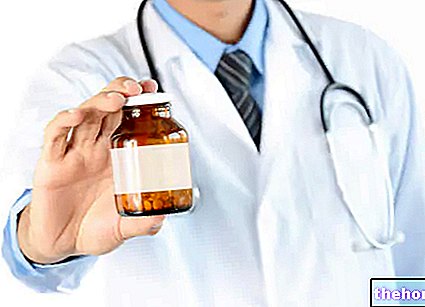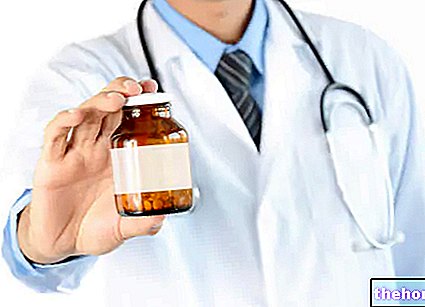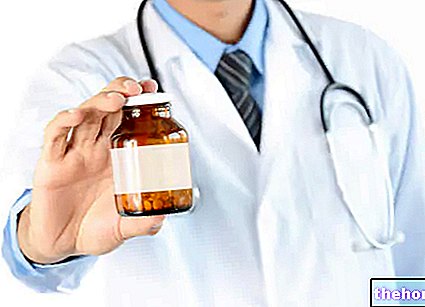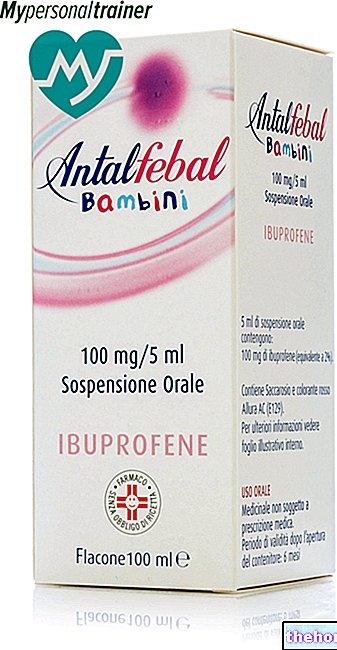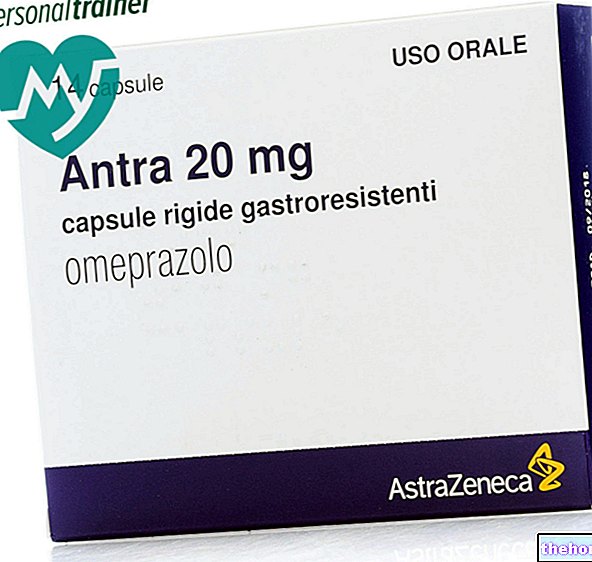Active ingredients: Paracetamol
Panadol 500mg Film-coated tablets
Source Package Leaflet: AIFA (Italian Medicines Agency). Content published in January 2016. The information present may not be up-to-date.
To have access to the most up-to-date version, it is advisable to access the AIFA (Italian Medicines Agency) website. Disclaimer and useful information.
01.0 NAME OF THE MEDICINAL PRODUCT -
PANADOL 500 MG TABLETS COATED WITH FILM
02.0 QUALITATIVE AND QUANTITATIVE COMPOSITION -
Each film-coated tablet contains:
Active principle: Paracetamol 500 mg
For the full list of excipients, see section 6.1
03.0 PHARMACEUTICAL FORM -
Film-coated tablets
04.0 CLINICAL INFORMATION -
04.1 Therapeutic indications -
Symptomatic treatment of acute painful states (headache, neuralgia, toothache, menstrual pain) and of feverish states.
04.2 Posology and method of administration -
The physician should assess the need for treatment for more than 3 consecutive days.
In adults, the maximum oral dosage is 3000 mg (see section 4.9).
For children it is essential to respect the dosage defined according to their body weight.
The dosage schedule of PANADOL in relation to body weight and route of administration is as follows (ages, approximated according to body weight, are indicated for information):
• Children weighing between 26 and 40 kg (approximately between 8 and 13 years): 1 tablet at a time, to be repeated if necessary after 6 hours, without exceeding 4 doses per day.
• Children weighing between 41 and 50 kg (approximately between 12 and 15 years): 1 tablet at a time, to be repeated if necessary after 4 hours, without exceeding 6 doses per day.
• Children weighing more than 50 kg (approximately 15 years of age): 1 tablet at a time, to be repeated if necessary after 4 hours, without exceeding 6 doses per day.
• Adults: 1 tablet at a time, to be repeated if necessary after 4 hours, without exceeding 6 doses per day. In case of severe pain or high fever, 2 tablets of 500 mg to be repeated if necessary after not less than 4 hours.
Children weighing less than 26 kg (age less than 7 years) : the medicine should not be given to this category of patients.
Elderly patients : the dosage must be carefully established by the doctor who will have to evaluate a possible reduction of the dosages indicated above.
Kidney failure
In case of severe renal insufficiency (creatinine clearance less than 10 ml / min), the interval between dosing should be at least 8 hours.
Do not exceed the recommended dose.
04.3 Contraindications -
• Hypersensitivity to the active substance or other closely related substances from a chemical point of view and / or to any of the excipients.
• Children weighing less than 26 kg (age less than 7 years).
• Severe renal insufficiency
04.4 Special warnings and appropriate precautions for use -
Do not administer for more than 3 consecutive days without consulting your doctor.
In rare cases of allergic reactions, administration should be discontinued and appropriate treatment instituted.
Use with caution in case of chronic alcoholism, excessive alcohol intake (3 or more alcoholic drinks per day), anorexia, bulimia or cachexia, chronic malnutrition (low reserves of hepatic glutathione), dehydration, hypovolemia.
In patients with glutathione-depleted states, such as sepsis, the use of paracetamol may increase the risk of metabolic acidosis.
Paracetamol should be administered with caution to patients with mild to moderate hepatocellular insufficiency (including Gilbert's syndrome), severe hepatic insufficiency (Child-Pugh> 9), acute hepatitis, concomitant treatment with drugs that impair liver function, deficiency of glucose-6-phosphate dehydrogenase, haemolytic anemia.
High or prolonged doses of the product can cause high-risk liver disease and even serious changes in the kidney and blood.
In case of prolonged use it is advisable to monitor liver and kidney function and blood count.
During treatment with paracetamol, before taking any other drug check that it does not contain the same active ingredient, as if paracetamol is taken in high doses, serious adverse reactions can occur.
Instruct the patient to contact the physician before associating any other medication. See also section 4.5.
04.5 Interactions with other medicinal products and other forms of interaction -
The use of the product is not recommended if the patient is being treated with anti-inflammatories.
During therapy with oral anticoagulants it is recommended to reduce the doses of paracetamol.
The anticoagulant effect of warfarin and other coumarin derivatives can be enhanced by the regular daily and prolonged use of paracetamol, with an increased risk of bleeding; occasional use has no significant effect.
Use with extreme caution and under strict control during chronic treatment with drugs that can determine the induction of hepatic monooxygenases or in case of exposure to substances that can have this effect (for example rifampicin, cimetidine, antiepileptics such as glutethimide, phenobarbital, carbamazepine) .
Drugs that slow down gastric emptying (eg propantheline) can reduce the absorption rate of paracetamol, delaying its therapeutic effect; on the contrary, drugs that increase gastric emptying speed (eg metoclopramide, domperidone) lead to an increase in absorption rate.
The concomitant administration of chloramphenicol and paracetamol can induce a prolongation of the half-life of chloramphenicol, with the risk of elevating its toxicity.
The administration of paracetamol can interfere with the determination of uric acid (by the method of phosphotungstic acid) and with that of blood glucose (by the method of glucose-oxidase-peroxidase).
The concomitant administration of NSAIDs or opioids determines a reciprocal enhancement of the analgesic effect.
Paracetamol increases the AUC of ethinylestradiol by 22%.
Paracetamol can reduce the plasma concentration of lamotrigine.
04.6 Pregnancy and breastfeeding -
Ask your doctor or pharmacist for advice before taking any medicine.
Clinical experience with the use of paracetamol during pregnancy and lactation is limited.
Pregnancy
Epidemiological data on the use of therapeutic doses of oral paracetamol indicate that no undesirable effects occur in pregnant women or on the health of the fetus or newborns. Reproductive studies with paracetamol have shown no malformation or foetotoxic effects. Paracetamol must however be used during pregnancy only after a "careful evaluation of the risk / benefit ratio.
Feeding time
Paracetamol is excreted in small quantities in breast milk. Rash has been reported in breast-fed infants. However, administration of paracetamol is considered compatible with breastfeeding. However, caution should be exercised in administering paracetamol to breastfeeding women.
04.7 Effects on ability to drive and use machines -
Panadol, due to the possible onset of dizziness, may impair the ability to drive and use machines.
04.8 Undesirable effects -
The following are the side effects of acetaminophen organized according to the MedDRA systemic and organic classification. Insufficient data are available to establish the frequency of the individual effects listed.
Skin and subcutaneous tissue disorders
Skin rash.
Very rare cases of severe skin reactions such as erythema multiforme,
Stevens Johnson syndrome and epidermal necrolysis.
Disorders of the immune system
Angioedema, larynx edema, anaphylactic shock, asthma.
Disorders of the blood and lymphatic system
Thrombocytopenia, leukopenia, anemia, agranulocytosis.
Hepatobiliary disorders
Changes in liver function and hepatitis.
Renal and urinary disorders
Acute renal failure, interstitial nephritis, haematuria, anuria.
Gastrointestinal disorders
Gastrointestinal reactions.
Ear and labyrinth disorders
Dizziness.
Respiratory, thoracic and mediastinal disorders
Bronchospasm in subjects sensitive to acetylsalicylic acid or other NSAIDs.
Reporting of suspected adverse reactions.
Reporting of suspected adverse reactions occurring after authorization of the medicinal product is important as it allows continuous monitoring of the benefit / risk balance of the medicinal product. Healthcare professionals are asked to report any suspected adverse reactions via the national reporting system. "address www.agenziafarmaco.gov.it/it/responsabili.
04.9 Overdose -
In case of overdose, paracetamol can cause hepatic cytolysis, which can evolve towards massive and irreversible necrosis: in the same case it can cause even serious alterations in the kidney and blood, which occur 12 to 48 hours after intake.
Symptoms due to acute paracetamol intoxication:
nausea, vomiting, anorexia, paleness, abdominal pain which usually appears during the first 24 hours.
In the event of an overdose, immediate medical treatment is still required, even in the absence of symptoms.
Emergency procedure: rapid elimination of the ingested product by gastric lavage, possibly forced diuresis and hemodialysis.
Antidote: As timely as possible administration of N-acetylcysteine or methionine.
05.0 PHARMACOLOGICAL PROPERTIES -
05.1 "Pharmacodynamic properties -
Pharmacotherapeutic group: Analgesics and antipyretics
ATC code: N02BE01
Mechanism of action
Paracetamol has an analgesic and antipyretic action: the analgesic activity seems to be linked to the ability of paracetamol to inhibit the biosynthesis of prostaglandins mainly at the level of the CNS, raising the pain threshold; the antipyretic action is expressed on the thermoregulatory hypothalamic centers, an action that is it manifests itself only in the case of febrile changes, by increasing the dispersion of heat through vasodilation.
05.2 "Pharmacokinetic properties -
Absorption
Paracetamol is rapidly and almost completely absorbed in the gastrointestinal tract.
Distribution
The percentage of paracetamol bound to plasma proteins at therapeutic concentrations is minimal.
Metabolism
Paracetamol is metabolised by the liver and eliminated in the urine mainly by glucuronidation and sulfation.
Elimination
Less than 5% is excreted as unchanged paracetamol.
05.3 Preclinical safety data -
The preclinical safety data on paracetamol available in the literature do not highlight relevant information for the indications and recommended dosages.
06.0 PHARMACEUTICAL INFORMATION -
06.1 Excipients -
Pregelatinised starch, maize starch, talc, polyvidone, stearic acid, potassium sorbate, hypromellose, triacetin.
06.2 Incompatibility "-
None.
06.3 Period of validity "-
4 years.
06.4 Special precautions for storage -
This medicine does not require any special storage conditions.
06.5 Nature of the immediate packaging and contents of the package -
Carton containing 10 or 30 film-coated tablets in blister packs.
06.6 Instructions for use and handling -
Unused medicine and waste derived from this medicine must be disposed of in accordance with local regulations.
07.0 HOLDER OF THE "MARKETING AUTHORIZATION" -
GLAXOSMITHKLINE CONSUMER HEALTHCARE S.p.A. - Via Zambeletti s.n.c. Baranzate (MI).
08.0 MARKETING AUTHORIZATION NUMBER -
Panadol 10 cpr AIC 024931040
Panadol 30 cpr AIC 024931053
09.0 DATE OF FIRST AUTHORIZATION OR RENEWAL OF THE AUTHORIZATION -
First authorization: 19.05.1983 / Renewal: June 2010
10.0 DATE OF REVISION OF THE TEXT
September 2015

